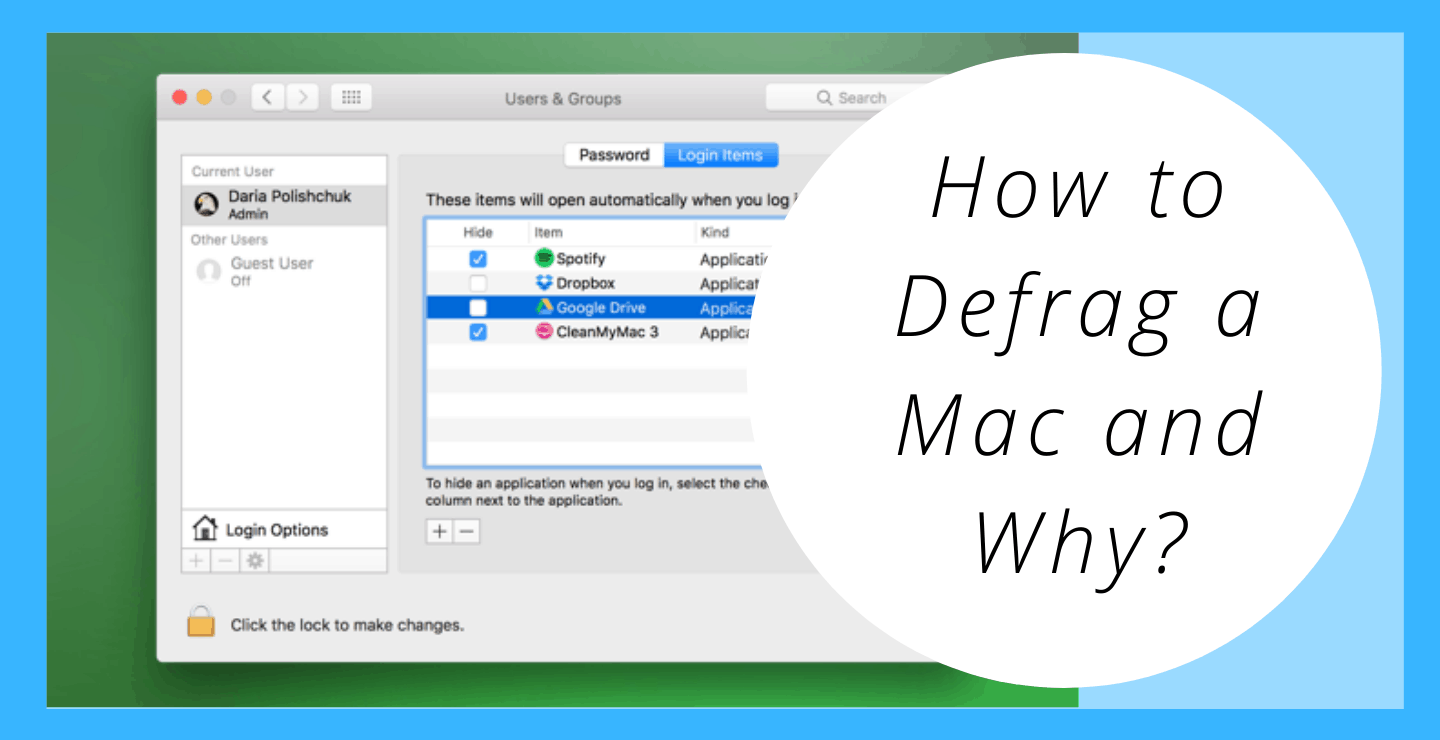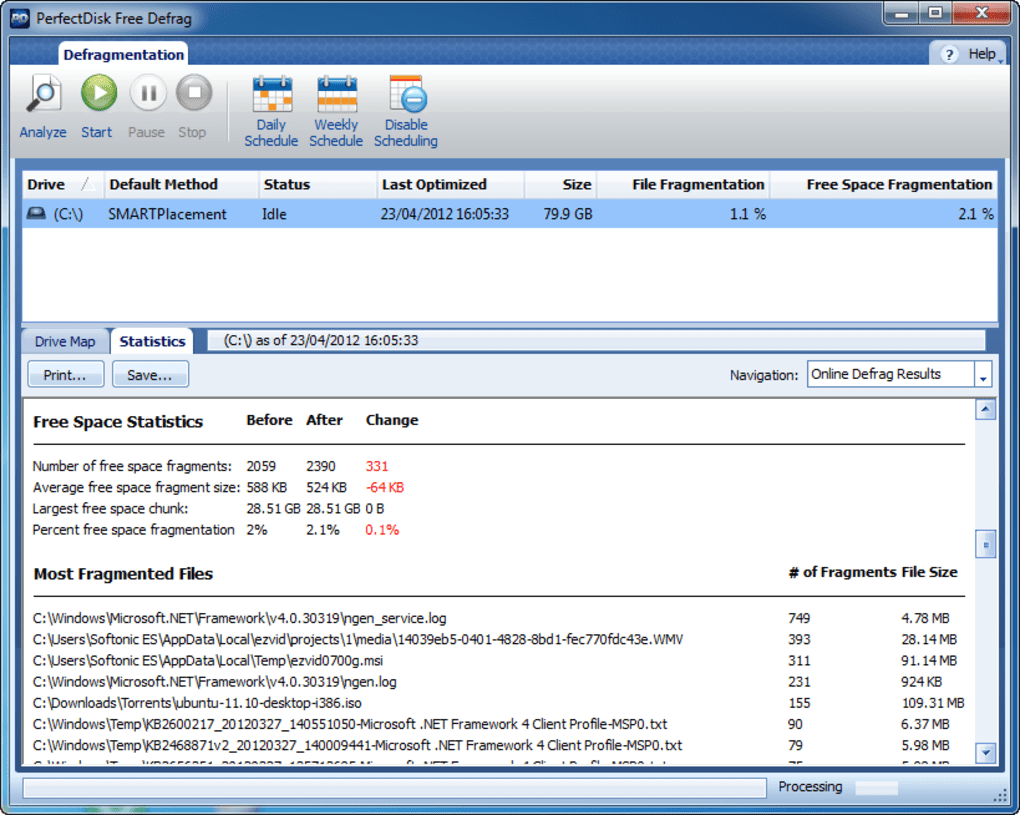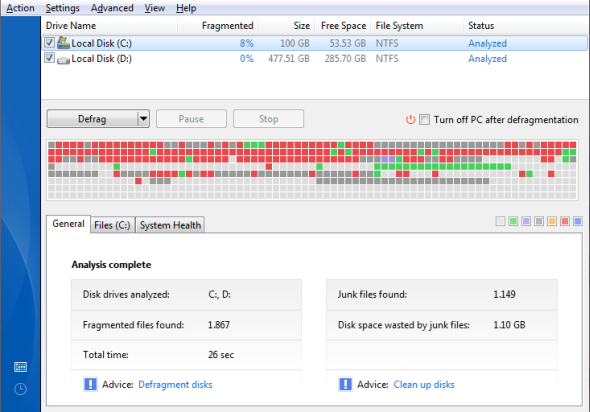You might be experiencing some performance issues with your Mac, and you knew from your PC days about defragging computers. Well, you won’t find any command or utility to do that on Mac. The point is that the Mac File System is designed differently than Microsoft's, and it defragments files automatically. However, there are still some situations when you may need to defrag Macbook once in a few years.
In this article, we’ll tell you how to defrag a Mac, all advantages and pitfalls of doing this, and what alternatives to defragging are out there. Anxious to find out? Then let’s start!
Do you need to defragment a Mac?
- Stellar Drive Defrag is an efficient utility that searches for scattered segments of data on Mac volume and organizes them to occupy contagious memory location. In this way the tool improves the data access speed of Mac and optimizes its performance.
- Nov 28, 2020 Stellar Drive Defrag, defrags Mac hard drive, organizes free space, and thus optimizes Mac’s performance. This tool even works on boot volume by creating Mac bootable DVD. Some of the very efficient features of this tool are defragmentation of Mac files i.e. The tool collects all logically related pieces of scattered file and locates them at.
- Free Defrag Software For Mac If your hard drive is more than 90 percent full, the macOS may have problems with automatic defragmentation routines. This situation is common for multimedia creators who produce plenty of large files in pro tools like Adobe Premiere, Final Cut, or Photoshop.
DiskTools Pro: One of the best tools that can tell you how to defrag MacBook Pro is DiskTools Pro. The software has three main features, i.e. Defrag, backup, and repair. This software makes the repair and maintenance of the Mac system easy and fast.
First of all, let’s find out why we do a Mac disk defrag. To cut a long story short, defragmentation aims to boost a computer’s performance by reorganizing the data on your drive. As a result, the related bits are grouped, and loading files and programs take less time. Simply put, Mac defragment moves everything back in order and can greatly speed up a slow system.
However, despite the obvious advantage, a Mac running any OS X version later than 10.2 generally doesn’t need to be defragmented. This is because OS X and macOS have their own built-in Apple Mac utilities that clean up fragmented files from the hard drive. Therefore, for most users, it eliminates the need to perform a regular defrag. But there is an exception to every rule, and in a few rare cases, a defrag for Mac can make a difference.
- Speed up your PC with quick & easy defragmentation. Defrag entire hard drives or individual files. Works with HDD and SSD and supports NTFS and FAT32 file systems! Download Free Version Get Defraggler.
- One of the fastest defraggers in the world, Disk Defrag often takes less than 10 minutes to defragment an average-size hard drive.

IDefrag is advanced Mac OS X disk defragmentation and optimization tool. Supports the very latest features of HFS+, including journaling, case sensitive filenames and adaptive hot file clustering (which means it won't mess-up the Hot Zone).
When do Macs need to be defragged?
Free Defrag Software For Mac
If your hard drive is more than 90 percent full, the macOS may have problems with automatic defragmentation routines. This situation is common for multimedia creators who produce plenty of large files in pro tools like Adobe Premiere, Final Cut, or Photoshop.
Defrag Os X
Therefore, if you have hundreds or even thousands of large (1GB and larger) movies, audio files, or creative documents, you should consider removing them to free up the storage. Another alternative is defragging a Mac.
Concerning the first option, there is a fast and safe way to remove unnecessary files from your Mac — a powerful app CleanMyMac X. It finds above 74 GB of junk on an average computer, including old and large files, app leftovers, and system clutter. It helps to boost computer performance, so you probably won’t even need to defrag a Mac.
However, if you still wonder, “How do I defrag my Mac?” read on. We’ve prepared all the essential guidelines for you.
How to defragment a Mac
One of the simplest and most user-friendly Mac defrag methods is to use a trusted third-party defragmentation program. But before choosing and installing the app, make sure to back up your data. Should something go wrong, you’ll be able to restore all necessary files easily. You can use Time Machine, iCloud, Dropbox, or any other external storage at hand for this purpose.


When choosing the defragmentation app, pay special attention to the compatibility requirements. Macs running operating systems older than OS X 10.2 are not compatible with the latest modern defragmentation software, so finding a relevant tool is challenging.

Once you’ve installed the program of your choice, open the utility and follow the instructions of a disk defragmenter for Mac. Give the process plenty of time to complete without moving your computer anywhere until the defragmentation is finished. Usually, you’ll need to restart your Mac as well.

Will defragmentation harm my HDD?
You may not worry: OS X defrag will not harm your HDD. As you already know, disk defragmentation can greatly speed up the traditional hard drive. It’s because HDD fragments all the data and stores it in multiple locations. And it may take quite a time to read the file with its pieces situated in different places. The procedure for arranging the data is not harmful to your HDD and aims to boost the computer’s performance. And while it is not advisable to turn to such extreme measures, defragmenting a hard drive disk is a safe procedure if, of course, performed accurately.
Why you should never defrag Mac’s SSD
The process described above is applied only to the hard drives. If you have a newer Mac with SSD (solid-state drive), you should never defrag its data. SSDs operate in a different way to a traditional HDD and already have a built-in automatic maintenance process. Therefore, it is not necessary to defrag a solid-state drive to boost Mac’s performance.
Furthermore, all defragmentation attempts can even hurt your SSD. Flash memory used by a solid-state drive has a finite lifespan because of the limited write and read cycles. And disk defragmentation is a process of reading the data from one place and writing it to another. So if you defrag SSD, you will perform thousands of write operations each time on the drive. It can speed up the degradation of a solid-state drive and lead to its wear and tear. And that’s not what you need.
What are alternatives to defragment a Mac?
If your Mac is running slowly, you don’t necessarily need to defrag Mac hard drive. Sometimes it’s not your HDD that’s having problems. Therefore, try some alternative methods that may help you speed up the system without disk defrag on Mac.
Repairing Disk Permissions
“Try repairing your disk permissions” is a standard Mac troubleshooting tip. Permissions are file settings that affect the ability to read, write, and execute the file. And if they are no longer set correctly, software that uses the file may not work right.
Microsoft office 2019 for mac download crack. In OS X Yosemite or earlier, the file permissions on a startup disk can be repaired with the help of Disk Utility. Note that beginning from OS X EI Capitan, disk permissions are automatically protected, and there is no need to verify them with Disk Utility.
How do I repair my Mac startup disk?
Free Mac Defrag Utility
Here are the steps for optimizing your Mac:
Open Disk Utility (Applications > Utilities).
Choose your startup disk.
Click the First Aid tab.
Click Verify Disk Permissions to check permissions.
Click Repair Disk Permissions to repair any inconsistent permissions.
If you don’t want to repair disk permissions manually, you can easily perform the action with the utility we mentioned above — CleanMyMac X. It has the Maintenance module that will help you optimize your Mac, including verifying startup disk and repairing disk permissions. Thus, you’ll ensure that your Mac’s operating system is functioning properly. You can download CleanMyMac here.
Therefore, before defragging your Mac, try to perform the Mac disk cleanup to increase the disk speed. It’s an easy and risk-free process that will not take more than a few minutes.
General speedup tips
Sometimes your Mac needs a good kick-start to run smoothly. Here are some tricks to speed up your computer.
How do I improve my Mac performance?
Idefrag
1. Update macOS software
Try to update your software to the latest versions as it performs better than the previous ones. Usually, system updates include performance and bug fixes that could be the reason for slowdowns.
2. Delete unnecessary files
Ensure that your Mac has at least 10 percent of total drive storage available at any time to perform background actions and provide enough space for temporary files, caches, and virtual memory. Once again, CleanMyMac X is a great solution for finding and removing useless and large files that take gigabytes of space on your Mac.
3. Stop programs from launching automatically
A large number of apps may launch simultaneously when you turn your Mac on. Http://steamidfinder.com. Some of them run in the background and are only visible in a menu bar, so it’s even hard to define if they’re actually running. You can stop them from loading by opening System Preferences, clicking on Users & Groups, and choosing Login Items. You’ll see a list of applications that launch during the startup. You can switch off the ones you don’t need by clicking the minus sign (-) button.
If you’re looking for some utilities that can help with all of that and even more, try Mac maintenance software like CleanMyMac X, It will optimize Mac performance safely and quickly.
We hope this article was helpful, and you found the answers to all your questions here. Thanks for reading and share this article if you liked it!
Defraggler For Mac
Send email notifications or make noises when done.
Supports HFS and HFS+ (Mac OS Extended).
Supports case sensitive and journaled filesystems.
Supports adaptive hot file clustering (“Hot Zone”).
Four powerful defragmentation algorithms:
Defragment whilst your disk is mounted.
Rearrange your disk the way you want.
B-Tree metadata file compaction/optimization support.
Thermal monitoring to make sure your disk doesn’t overheat.
High performance user-defined file classification engine.
Per-block and accurate whole disk display.
Detailed statistics so you know whether you need to optimize.
Inspector allows you to view details of individual extents/files.
Quickly jump to specific files to examine them in more detail.
Altivec accelerated display for improved performance.
Auto-update feature ensures you always have the latest version.
AppleScript support.